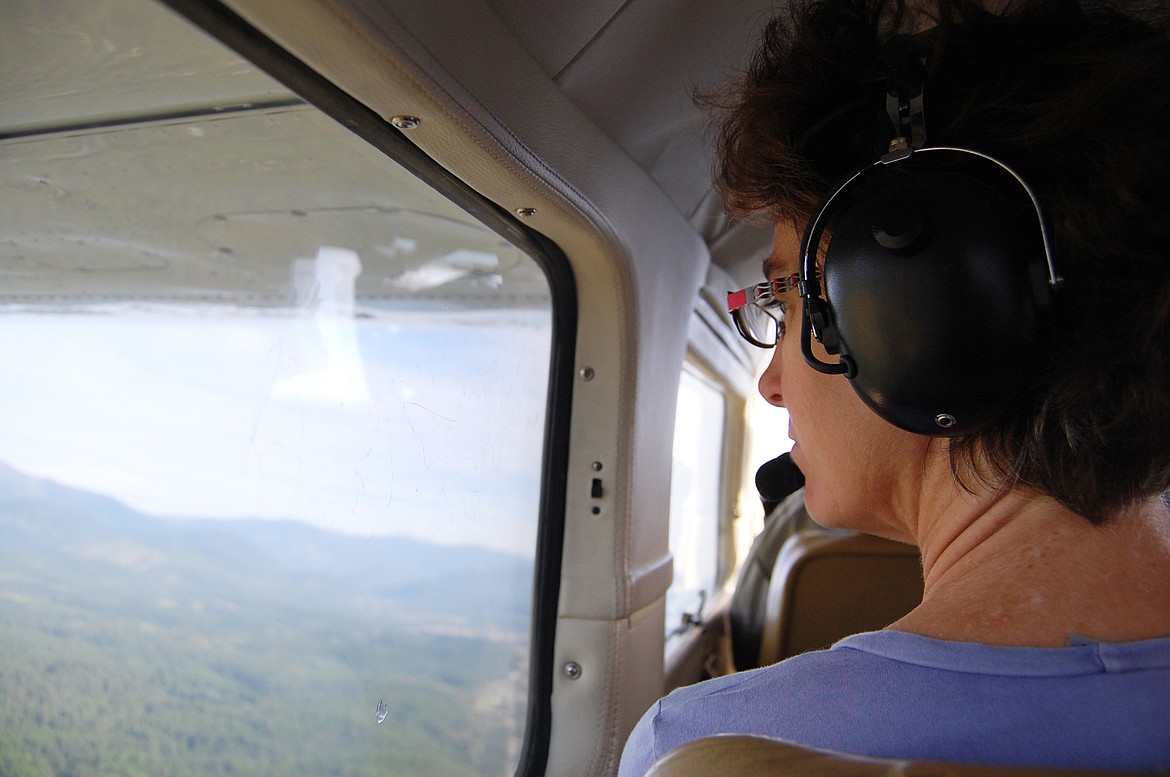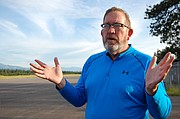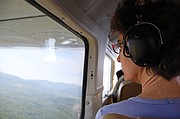Coalition looks for common ground in Kootenai Forest
The shadow of a six-seater jet traced the Kootenai National Forest as Kristin Smith pointed to where wildfires once bordered her town, to places she hoped would remain wild, and to acres her community hoped to use as a resource.
“I’m one of the 20,000 residents of Lincoln County that chooses to live here for the beauty that it affords,” Smith said, owner of Cabinet Mountain Brewing Company.
For decades, the forest has been the object of a tug-of-war between neighbors, wilderness advocates and loggers, and various sects of recreationists. Each have fought to set the rules for the land’s future.
For roughly 10 years, a growing coalition has worked to find common ground between the divisions. The Kootenai Forest Stakeholders Coalition includes the voices of loggers, business owners, mill operators and conservationists.
“The people who live here have to be able to live within the forest community, it’s part of our culture, and to be able to utilize it as a resource and to protect themselves from wildfire,” Smith said, an advocate for the coalition. “I think we’re getting there.”
In 2015, the stakeholders created a forest-wide proposal. It established guidelines for timber management, created areas for motorized and non-motorized recreation and sought new wilderness designation.
But for those suggestions to become reality, they have to gain regional and national support — including an act of Congress.
On a recent afternoon, Mark Peck stood with the Kootenai National Forest at his back. Like many Libby residents, Peck comes from a timber family.
“When I grew up here, we were probably one of the most economically vibrant economies in the state,” Peck said, a Lincoln County Commissioner. “I don’t think it’s any secret that’s not where we’re at today … we cannot afford for this forest not to produce.”
Libby — the county seat — once stood as a great sawmill complex. During the 1980s, the annual Kootenai timber harvest could top 200 million board feet. But mill companies sold, workers were laid-off, and cutting efforts hit lawsuits as people pointed to the cutting’s environmental impact on the land.
Today, the forest ranges between 50 to 55 million board feet, according to Kootenai Forest Service officials.
“We lost the balance of common sense management,” Peck said. “We’ve started this false argument of pitting wilderness against management.”
Today, more than 24 percent of the population in Libby — roughly 2,590 people — live below the poverty line. The national average stands at roughly 13 percent.
Peck said the coalition creates a space for locals to give input on planned logging that would create jobs and reduce forest fuels while considering wildlife needs.
“We want to build a restoration workforce right here,” said Robin King, a stakeholder in the coalition.
King, the executive director of the Yaak Valley Forest council, said that includes projects like thinning, burning and mechanical timber harvest.
The stakeholder’s forest-wide proposal calls for an additional 180,000 acres of wilderness in the Scotchman and Cabinet mountains. It also seeks a harvest of 70 to 90 million board feet a year.
Amy Robinson with the Montana Wilderness Association said the stakeholders are moving forward on two priorities.
“One is helping our timber partners and working with the Forest Service in expediting, in ways that we can, timber projects,” she said. “The other stream would be this legislative stream, where we can designate wilderness and recreation areas across the majority of the Kootenai.”
John Gubel with the Cabinet Ranger District said in recent years, he’s seen the Kootenai coalition grow as members across the Kootenai are pairing directly with their ranger districts.
In the past, Gubel said his office received a collage of individual comments on management efforts the agency would sort through to find balance. He said the coalition has begun to help identify points of agreement.
“They’re doing a lot of work for us,” he said.
But Gubel said the coalition’s request for harvest exceeds what the agency typically can do within a year.
“To increase what we can do, we need an increase in money and people,” he said.
Gubel said a national conversation on Forest Service management is unfolding around whether the agency can do more to prevent large, dangerous forest fires in a more efficient way. Though he said how that sorts out and whether it means more resources is still undetermined.
Quinn Carver, a national resource staff officer, notes that in 2015 the agency completed its forest plan for the Kootenai. He said that document acts as a recommendation for Congress and the Forest Service is responsible to implement whatever comes from Washington.
He said that plan took roughly a decade to shape.
“We’re like a battleship, we don’t turn on dime,” Carver said.
He said when the agency agrees with a new proposal from the coalition, it’s required to go through a public process before the agency can offer a recommendation. He said working toward wilderness designation gets tricky.
“At this point, we’re trying to redefine what the role of the stakeholders and Forest Service working together is, how to communicate well as their goals expand,” Carver said. “I wouldn’t say the relationship has always been shiny between the agencies and the public, but it’s good now for the communities I live and work in. That’s been helpful.”
Peck said when the community and the Forest Service come to an agreement, often “the process gets hijacked.”
“Local groups with diverse interests work with the Forest Service and come up with a viable management process and in waltzes somebody who didn’t participate and then tie it up in court,” he said.
In 2016, two days before the Forest Service began a harvest of 39 million board feet on the east side of Lake Koocanusa Reservoir, two federal appellate judges blocked the project. The project had been approved by the Libby Ranger Forest District in 2014.
The Alliance for the Wild Rockies sued to stop the project, saying it could harm wildlife in the area, including grizzly bear, bull trout and lynx.
Mike Garrity, executive director of the Alliance for the Wild Rockies, said the organization participates in management discussions by submitting its comments to the Forest Service, a process created by the National Environmental Policy Act.
“Just because a bunch of local people get together, they can’t override Congress and decide what laws should and shouldn’t be followed,” Garrity said. “No one elected this group to speak for the American public, they can submit input like all Americans can.”
King said citizens should have the right to petition the government. She said the coalition is participating in the National Environmental Policy Act by “solving our differences on the ground instead of in the courtroom.” Which, she said, anyone is welcome to join.
Peck said while there are still hurdles for the coalition, they’re in a better place than they were a decade before.
“I want to see a healthy, vibrant forest that supports not only the landscape, but all species including homosapiens,” he said. “So far, we’ve tilted that balance to extremes. We need to get it into the middle.”






